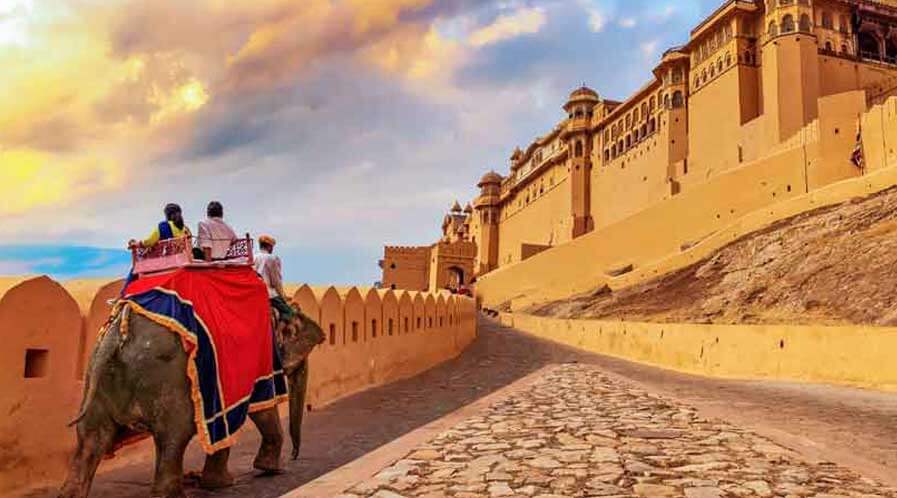Jaipur Tour and Travel Guide

Activities :
The city of Jaipur was founded by King of Amer, Maharaja Sawai Jai Singh II on 18 November 1727, who ruled from 1699 to 1743. He planned to shift his capital from Amer, 11 kilometres (7 mi) to Jaipur to accommodate the growing population and increasing scarcity of water. Jai Singh consulted several books on architecture and architects while planning the layout of Jaipur. Under the architectural guidance of Vidyadhar Bhattacharya, Jaipur was planned based on the principles of Vastu Shastra and Shilpa Shastra.The construction of the city began in 1726 and took four years to complete the major roads, offices, and palaces. The city was divided into nine blocks, two of which contained the state buildings and palaces, with the remaining seven allotted to the public. Huge ramparts were built, pierced by seven fortified gates.
During the rule of Sawai Ram Singh I, the city was painted pink to welcome HRH Albert Edward, Prince of Wales (who later became King Edward VII, Emperor of India), in 1876. Many of the avenues still remain painted in pink, giving Jaipur a distinctive appearance and the epithet Pink city.
Amber Fort
At the beginning of the Sawai Jai Singh era, he developed Amber as the capital of Jaipur. It is 10 Km away from Jaipur. Its palace and complex area has a latticed gallery, Dewan-e-Aam (for the general public), lavish garden, grand entrance, and Kali Temple is a mesmerizing monumental marvel where one can reach by using Elephant Safari feeling the royal living.
Jaigarh Fort
Nearby Amber Palace is Jaigarh Fort one of the strongest fort of Asia. It has a wide collection of armours and Jai Ban is the USP of Jaigarh which is the largest cannon of the world. Jaigarh is basically an army purpose structure which was meant for guarding Amber Palace.
Nahargarh Fort
Nahargarh Fort stands on the edge of the Aravalli Hills, overlooking the city of Jaipur in the Indian state of Rajasthan. Along with Amer Fort and Jaigarh Fort, Nahargarh once formed a strong defence ring for the city. The fort was originally named Sudarshangarh, but it became known as Nahargarh, which means 'abode of tigers'. The popular belief is that Nahar here stands for Nahar Singh Bhomia, whose spirit haunted the place and obstructed construction of the fort. Nahar's spirit was pacified by building a temple in his memory within the fort, which thus became known by his name
Jalmahal
As the name suggest, Jal Mahal is located in between the water nearby Amber Palace enroute. It was built for leisure time for King and his Queens for bird watching, scenic beauty, Garden Tour as it has maintained eye soothing view surrounded by hills on both sides.
Gaitore
It is also known as Maharani ki Chatri where the remnants of queen of Amer has been preserved in her fond remembrance. Other then this it was the royal cremation ground for royal family of Amer. Gaitor is enroute of Amber Palace and has distinct architectural design.
City Palace
Raja Sawai Man Singh was the king who set up the Jaipur City and named it as his capital. It is located in the walled area of Jaipur city. The architecture of City palace is the perfect reflection of 20th century’s Rajathani and Mughal School of Art including the marvellous painting work . It has beautifully designed garden with large variety of decorative flowers, Huge Halls, perfect dining area with lavish decoration everywhere showing the true colors of Marwar.
Jantar Mantar
Sawai Man Singh was a great patron of art as well as maintained area of interest in archaeology. Jantar Mantar is the archaeological marvel for its visitors around the world especially for those who are keenly interested in knowing the progress of science in that era. Distinct structures using stones and marble have been erected scientifically for measuring and ascertaining ascertain day length, seasonal fluctuation and many other observations.




